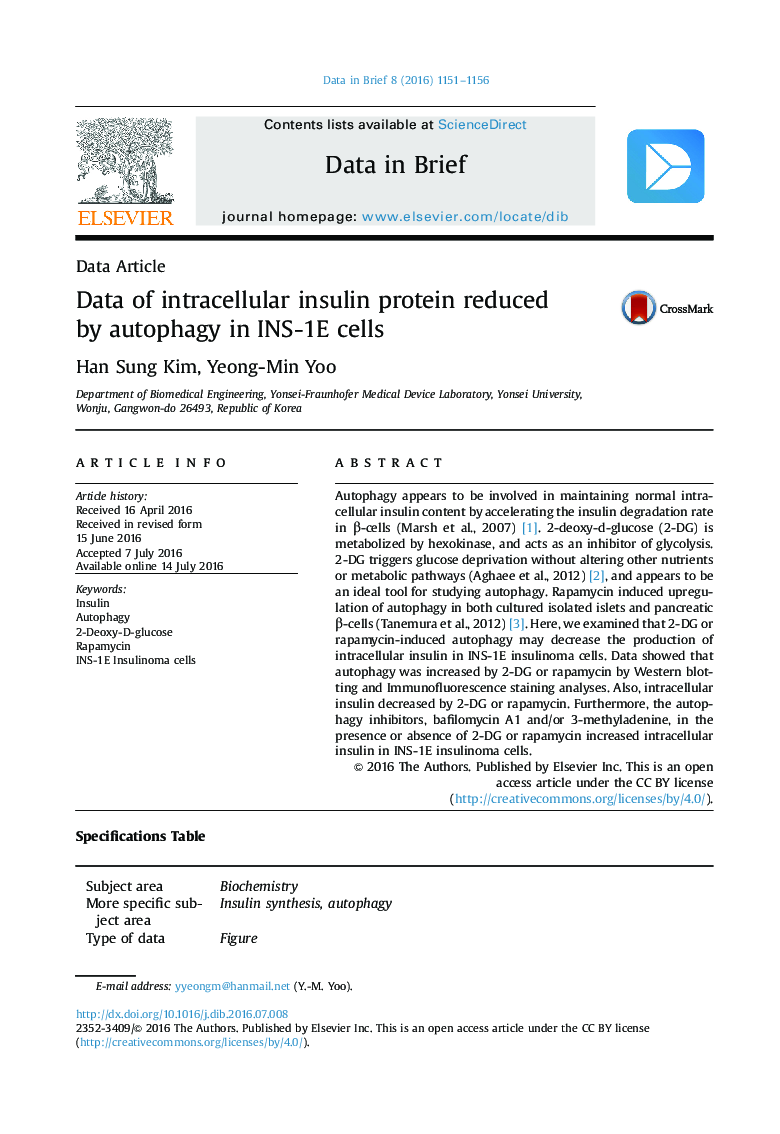| Article ID | Journal | Published Year | Pages | File Type |
|---|---|---|---|---|
| 6597490 | Data in Brief | 2016 | 6 Pages |
Abstract
Autophagy appears to be involved in maintaining normal intracellular insulin content by accelerating the insulin degradation rate in β-cells (Marsh et al., 2007) [1]. 2-deoxy-d-glucose (2-DG) is metabolized by hexokinase, and acts as an inhibitor of glycolysis. 2-DG triggers glucose deprivation without altering other nutrients or metabolic pathways (Aghaee et al., 2012) [2], and appears to be an ideal tool for studying autophagy. Rapamycin induced upregulation of autophagy in both cultured isolated islets and pancreatic β-cells (Tanemura et al., 2012) [3]. Here, we examined that 2-DG or rapamycin-induced autophagy may decrease the production of intracellular insulin in INS-1E insulinoma cells. Data showed that autophagy was increased by 2-DG or rapamycin by Western blotting and Immunofluorescence staining analyses. Also, intracellular insulin decreased by 2-DG or rapamycin. Furthermore, the autophagy inhibitors, bafilomycin A1 and/or 3-methyladenine, in the presence or absence of 2-DG or rapamycin increased intracellular insulin in INS-1E insulinoma cells.
Related Topics
Physical Sciences and Engineering
Chemical Engineering
Chemical Engineering (General)
Authors
Han Sung Kim, Yeong-Min Yoo,
